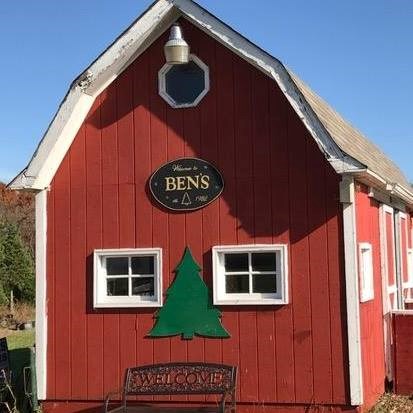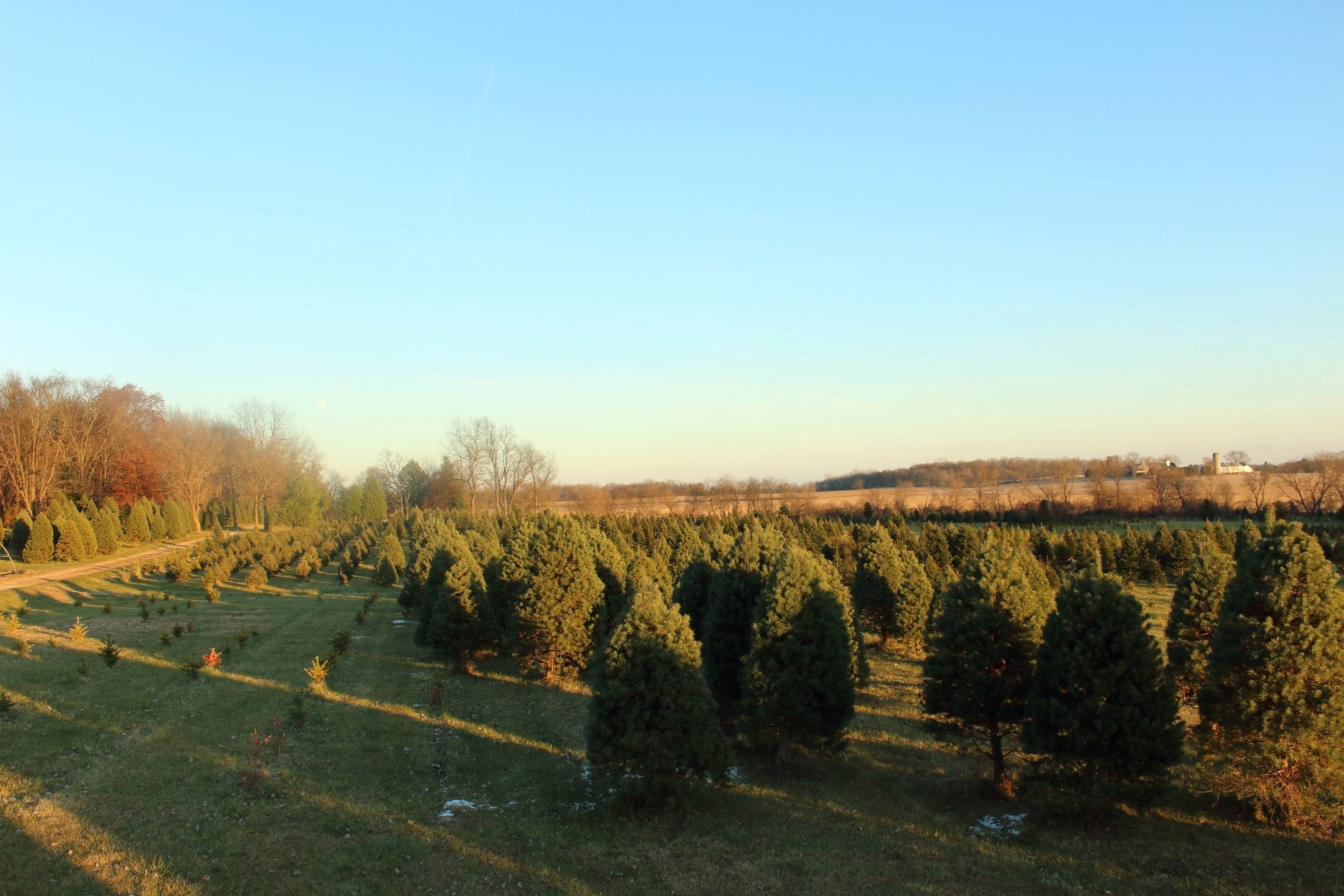Ben's Christmas Tree Farm
| 7719 Ryan Rd, Harvard, IL, 60033 | |
| (630) 279-0216 | |
| Bernard & Theresa Czarnowski | |
| http://www.benstreefarm.com/ | |
| benstreefarm |
Christmas tree types at Ben's Christmas Tree Farm:
Balsam fir is a beautiful pyramidal tree with short, flat, long-lasting, aromatic needles. Balsam fir and Fraser fir have many similar characteristics and some botanists consider them extensions of the same species. Their geographic ranges do not overlap and the Balsam fir has to have cold winters and cool summers. Balsam fir has a nice, dark green color and very fragrant. The tree was named for the balsam or resin found in the trees which was used to treat wounds in Civil War.
Canaan (pronounced "Ka-naan", with emphasis on the last syllable) is a more exotic variety of the balsam family, and has many similarities to both Fraser and balsam firs in growth and appearance. Named after a stand of these trees were identified in the Canaan Valley of West Virginia, some are indistinguishable from balsam fir; others are indistinguishable from Fraser fir. To the well-trained eye, Canaan fir generally have more blue-green on the upper needle surface and have less distinct silver bands on the lower needle surface, and generally have more upswept branches near the top of the tree
Native to - you guessed it, Colorado and high elevations in the mountains of the western US. Its 3/4 to 1-1/4 inch-long, stiff, very sharply pointed needles are attached individually to twigs and grow on small peg-like structures that remain on the twig after the needles have fallen. Foliage color varies from green to blue-green to silvery-white. The natural symmetry of blue spruce allows for beautiful trees with minimal shearing. Blue spruce branches are relatively stiff and will support many decorations and relatively heavy ornaments. Needle retention is good.
Part of the Balsamea section of the Fir family, many botanists actually consider Frasers to be an extension of the Balsam species! A great combination of symmetry, strong limbs, and good needle retention (which do not prick easily when hanging ornaments) make it a great tree for your home. With a fraser, a spicy blend of fruit and forest will gently fill your home. The Fraser fir has been used more times as the Blue Room Christmas tree (the official Christmas tree of the President of the United States's White House) than any other type of tree.
The Norway Spruce is the most fragrant of all of the trees on our farm. Native to the European Alps, the Balkans, and the Carpathians, Norway Spruce's were brought to America by european settlers, and continue to be most popular among our European customers. A distinctive trait of Norway Spruce is the strong central leader and horizontal side branches, great for lots of ornaments.
Every Christmas, the Norwegian capital city, Oslo, provides the cities of New York, London (the Trafalgar Square Christmas tree), Edinburgh and Washington D.C. with a Norway Spruce, which is placed at the most central square of each city. This is mainly a sign of gratitude for the aid these countries gave during the Second World War. A press release from Umeå University says that a Norway Spruce clone named Old Tjikko, carbon dated as 9,550 years old, is the "oldest living tree". Norway Spruce has a long lasting fragrance that is said to have a relaxing effect upon body and spirit.
Native to Europe and eastern Asia, Scotch has historically been the most popular Christmas tree grown stateside. 1 to 3 inch long green to blue-green, somewhat stiff needles are attached to stiff branches, and are typically sheared tightly to produce a tree with dense foliage. Scotch pines have strong branches that are excellent for supporting heavy ornaments. The needle retention of cut Scotch pine is excellent, better than almost any other Christmas tree species. In fact, unlike most other Christmas tree species, Scotch pine tends to hold its needles even when the tree becomes very dry!
Native to eastern North America and popular in the Midwest. Its two- to five-inch-long, yellow-green to blue-green, soft, flexible needles are attached to flexible branches in groups of five, giving the tree an almost delicate look, which becomes wonderfully translucent when lights are added. Like Scotch pine, eastern white pine is most commonly sheared fairly tightly, producing a tree with dense foliage. White pines are a great choice for households with allergies as they do not have a strong fragrance. Branches will support fewer and smaller decorations. Needle retention of cut eastern white pine is very good to excellent.
White spruce is a tree of the northeast US and Canada. It is a favorite of customers who prefer a natural, traditional look because it grows into a great shape with little pruning compared to other varieties. White spruce has green to bluish green needles, moderatly strong fragrance, and think foliage, perfect for Christmas tree ornaments. The needles are stiff but the tips are blunt, making them essentially prickless. The tree is excellent for heavy ornaments. White spruce wood is prized for it's light color and fine grain characteristics. Among its more interesting uses is an an export for making game boards (goban) for the Japanese game "Go" (a game using a board and stones which has been played since the Han dyasty.) White spruce is the state tree of South Dakota. as well as the provincial tree of Manitoba!



